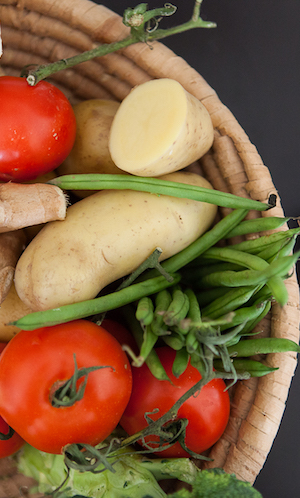
‘Infinite Variety Soups’ Technique
This is a technique for a satisfying soup every time, with whatever is in season and in the fridge. Infinite variations are possible.
The basis is yellow (split) mung beans. Red lentils work just as well, and are available also everywhere in the world, although they are slightly less sweet than mung.
Look for recipes in Soups in the Recipe section.
-
step 1
- 125 ml yellow mung (split)
- 750 ml water
- 1 tablespoon Ghee
- 3 tablespoon ginger, grated
Wash the mung (or red lentils) well with several changes of water. Then add measured water and bring to the boil.
After the first boil, scoop off the froth that comes to the surface (as much as is practical). Our grandmothers always did that when making broth! This reduces the tendency to create gas in the digestive system.
Then add some ghee (or some good oil such as olive) and the ginger. Always add ginger (more than you think) when cooking legumes- again it improves digestion dramatically.
Cook slowly, perhaps with a partially open lid (a closed lid with cause it to boil up and over onto the stove) for about 30-45 minutes. This is the base to all ‘Infinity Variety Soups’.
-
step 2
- 2-3 vegetables, various colours
- optional powdered spices and herbs
- 1 teaspoon Good Salt, unrefined.
To include or feature a ‘Roasted Vegetable’ give great flavour to soups…. such as pumpkin, sweet potato, celeriac, beetroot, parsnip, potato (although potatoes are so nice if roasted in ghee that they rare reach the soup pot).
Any vegetable may be added in the final stage (last 15 minutes) of the cooking of the legumes….such as carrots, leeks, cauliflower (although that is nice roasted too), broccoli, green beans or spinach…. there is no limitation.
If using roasted vegetable add to the soup in the last 5 minutes of cooking (perhaps saving some for texture). When all vegetables are soft and the dhal (legumes) breaking down to a porridge like consistency, you can use a masher, fork or a kitchen whizz to puree the soup, and add water for you desired thickness. I like a thinner soup but many enjoy it thick like a puree.
An alternative is to leave the vegetables, or some of them, in cut pieces to give texture and form to the soup. It is all good- infinite variety. Experiment and Enjoy.
-
step 3
- 1 per serve lime wedges
- 3 tablespoon parsley, fresh
Always, when using legumes in a recipe, include or add when serving some citrus juice such as lime, lemon or even orange. The taste is great AND again it aids in the smooth digestion of beans.
Finishing touches can include a swirl of cream, a spoon of yoghurt, some coconut cream, some olive oil swirled over the surface, some roasted seeds or some spices fried in ghee poured on at the table!.
ALWAYS if possible some fresh green leaves (for the bitter taste).
-
step 4
- 1-2 teaspoon Ghee
- 1 teaspoon whole spices or seeds
Optional – you can treat any soup like a dhal and add a tarka (chaunce) over the soup at the last moment, or at the table. So perhaps heat some ghee and gently fry some cumin seeds until fragrant and pour over the soup (swirl a little hot water around the pan, to capture all the flavours, and add as well).
Perhaps some cherry tomatoes after the cumin seeds and just soften a little and add.
Perhaps some fennel seeds over a spinach soup…..
Perhaps…………….





